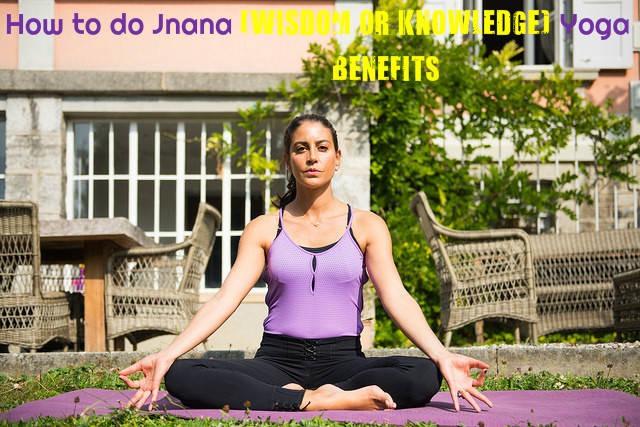How to do Jnana (Wisdom or Knowledge) Yoga – Benefits
Knowledge makes a man perfect. It makes you powerful also. Everything in this world involves knowledge. Yoga also involves knowledge. Jnana yoga is a type of yoga that involves gyana or knowledge. Jnana yoga, Bhakti yoga, Karma yoga and Raja yoga are considered as the four pillars of yoga. It takes years for one to become a master in the art of yoga. Jnana yoga is based on Advaita Vedic knowledge. Jnana yoga is also known as the yoga of right knowledge.
Jnana Yoga in Bhagavad Gita:
Jnana yoga can be traced down to the Vedic ages and the age of Bhagavad Gita. Hindu Lord Krishna is associated with Jnana yoga in the ancient age. It is now modified and altered with the changing time to become the yoga that you practice today. However, the objective of Jnana Yoga remains the same.
Jnana yoga was popularized by the Hindu priests like Ramanuja and Shankaracharya. This way it became popular all over India. Now Jnana yoga is known all over the world and practiced in many parts of the world.
Jnaa yoga focuses on three points, which are Viveka, Neti-Neti and Vicara. Viveka is the path to self-realization. Neti-Neti implies to the removal of false ego and getting rid of materialistic objectives of life. Like Bhakti yoga, Jnana yoga also emphasizes on sacrifice, which can take you closer to the Supreme Lord. Vicara is the final objective, which is self-realization. By practicing jnana yoga, a man becomes wise and knowledgeable. This knowledge makes a man pure at heart and close to the divine power.
You can practice jnana yoga in various ways. Deep meditation is one of the best ways to practice jnana yoga. Here is a step by step instruction of practicing jnana yoga. It is simple and you can easily practice it at home.
Jnana Yoga Steps:
- Sit on the yoga mat in a comfortable position. You can sit in cross legged position (Sukhasana) or in Ardha Padmasana position. To sit in Ardha Padmasana position, you have to sit cross legged on the mat. Now spread your legs straight in front of you and then bend your right knee. Lift it with your right hand and place it on the outer side of your left thigh. Similarly, bend your left knee and place it against the other leg. You may also sit in Padmasana pose. In this pose also you have to first sit on the yoga mat in cross-legged pose and spread your legs straight in front of you. Fold your right leg at the knee and then lift it up with the help of your right hand and place it on the outer side of your left thigh. Now bend your left knee and place it on the outside of your right thigh with your left hand. Vajrasana pose is another position in which you can sit on the yoga mat. Here you have to kneel down on the floor in such a way that the upper part of your feet touches the ground. Your knees, ankles and toes should touch the floor and must be kept parallel to each other. You can place your hands on your knees.
- Once you have attained a comfortable position, close your eyes and try to concentrate on your breathing. Inhale and exhale deeply and continue it for some time.
- Fully concentrate on your breathing and free your body from the surroundings, worldly thoughts and passions, and emotions. Try not to think of anything. Keep all thoughts away from your mind.
- Once you are free from any thoughts and feel relaxed, your mind will become calm, away from any disturbances or sounds in the surrounding. Now you are ready for Jnana yoga meditation.
- Jnana yoga is a yoga practice that helps you know your true self. You can ask questions and find out answers from your inner self. This will help you know more about yourself and understand the real you.
- Jnana yoga is about asking questions and searching the truth about your inner gut feeling. You will know better about t-your inner self by practicing this yoga.
- Try to discover fasts inside yourself. Concentrate on one question at a time and once you get an answer to your question, you can move on to the next question.
- You can stay in Jnana yoga meditative position for as long as it is comfortable for you. In the initial stages, you may find it difficult to concentrate and may get disturbed by external factors. But with practice you will be able to fully concentrate on your inner self and become calm and relaxed. Once you reach the final stage of your meditation, you can end this session.
- When you end up the session, you have to take care of a few things. After meditation, do not open your eyes in a moment. Instead, you can perform palming. This is done by keeping the eyes closed. Rub both of your palms tether for a while. This will generate heat and make your palms warm. Place these warm palms over your eyes. Now you can open your eyes slowly.
- Release from the pose in which you are sitting. Your meditation is complete.
Benefits of Jnana Yoga Poses:
- Jnana yoga is great for getting you relief from tension, stress and mild depression.
- It can make your brain calm and relaxed.
- You can increase your memory power by practicing this yoga regularly.
- This yoga is excellent for increasing your concentration power.
- You can practice this yoga to cure insomnia.
- Practice Jnana yoga regularly and this will help in rejuvenating your mind, body and the soul.




